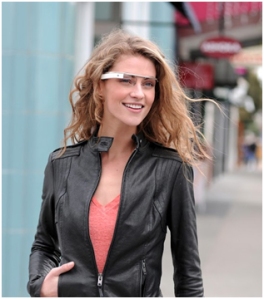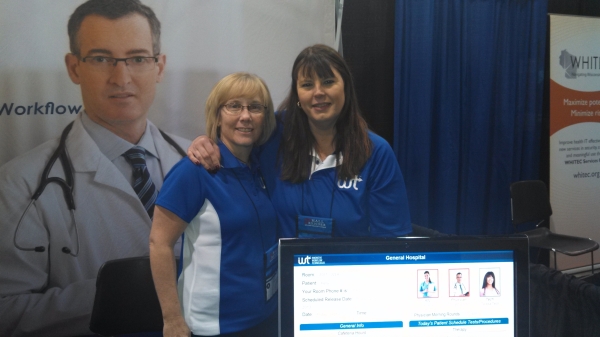We were happy to participate in such a great fundraiser again this year! For more information on how you can contribute to a great cause visit http://ww5.komen.org/BreastCancer/UnderstandingBreastCancer.html
Author Archives: iwtsolutionsky
Hot Technologies for Healthcare in 2014
January 6, 2014
Hot Technologies for Healthcare in 2014
By: Linda Frank, President of Innovative Workflow Technologies
As a software innovation company we’re excited about the coming year. 2013 saw a lot of growth in health technology innovation and application. The impetus is being spurred by a number of factors, including the HITECH act, the Affordable Care Act (“Obamacare”), and the rise of the Accountable Care Organization. Collectively these forces are encouraging adoption of information technology, as well as standardization and sharing of information. Here are some of the top technology trends in 2014 that will facilitate population health and wellness.
Consumerization: In the past engaging patients in their healthcare was at times futile. Now, however, consumers are finally being incentivized to participate in improving their health and wellness, and technology provides a significant vehicle for helping consumers to this end. Advances in patient-centric technologies include mobile apps, virtual house calls, telehealth, self-monitoring devices with feedback apps, PHRs and patient access to EHRs, to name a few. Take a look at the work we are doing with Genesis Health Technologies, where Genesis provides the patient with a medical grade glucose monitor, which instantly transmits glucose results to a database via cell phone without needing to dock or upload. Software developed by IWT provides patients and caregivers with alerts and access to the information, and links in other relevant data such as medication compliance. See more examples of how technology can empower patients through the personal story of Eric Dishman on the TED Blog. As he says, the future of healthcare is “smart teams”.

Wearable technology will factor big into this equation for both patients and providers. Talk about ubiquitous! With this technology, the era of the stationary PC is on its way out. Rather computing will become extensions of our bodies, constantly enhancing and improving our everyday lives. 2013 saw an increasing trend in consumers adopting “activity trackers”, i.e. Nike, fitbit, Jawbone. Just think… what a powerful consumer empowerment tool! Google Glass was released in 2013. Imagine a surgical team wearing Google Glasses… The surgeon might use it to view images or medical records about his patient. The anesthesiologist might pull up vital signs that would ordinarily be on monitors. For more examples, read “The Healthcare IT Applications of Google Glass” by Dr. John D. Halamka . Wearable technologies will be game changers, so watch for a lot of activity on this front in 2014.

Mobility: Increasingly users will be allowed to bring their own personal devices–tablets and smartphones–to work (BYOD). These devices offer immediate yet simple touchscreen access, and the number of applications that can be downloaded and used on them is growing rapidly. While the providers are hungry to use their devices to access our PICASO application, IWT’s experience has been that the hospitals are facing governance issues, which are proving to be a barrier. Concerns include impact on wireless network infrastructure, technical support and security concerns for healthcare data breach (identity and access management, data security, remote access, and risk of theft). 2014 should see positive movement in this area, and then the sky is the limit.
Printing technology, as in 3D printing, for creation of biological material such as implants and tissue: Surgeons have already been using 3D printing to design customized implants for surgical implantation, but it doesn’t stop there. Recent advancements, albeit early in their development, include introduction of the bio pen for “drawing” new bone, skin and muscle on to patients, and 3D tissue printing which uses inkjet printing technology to print cells taken from the eye. This represents the first time that anyone has been able to print out central nervous system cells. These are both in their infancy, but 2014 should see some huge advancements in this technology.

Energy Management: Gartner Group predicts that “energy management will become an enterprise-level discipline by 2017, which will be enabled by energy management information systems.” In partnership with Johnson Controls and HDR , IWT has already headed down this path with the development of HEO (Healthcare Environment Optimization), which optimizes air exchange rates and energy use through integration of a hospital’s building automation system with software that determines when an operating room is occupied by a patient. Look for continued use of IT in healthcare energy management in 2014.
HEO Application
A recent article states that new technology can help prevent hospital nosocomial infections. Our Healthcare Environment Optimization (HEO) application, in collaboration with JCI, uses IWT technology to increase air exchanges in the operating room, while the patient is in the room. Click here for the full article.
BedReady
BedReady is an application created by IWT Solutions that offers real-time optimization of patient throughput by managing bed capacity.
Midwest HIMSS 2013

Kelly and Jen posing at our booth during Midwest HIMSS in Milwaukee, WI!
Health and Technology
Bernie and I attended the Kentucky eHealth Summit this week in Bowling Green. Kentucky is doing an amazing job on some fronts, and not so good on other fronts. According to Audrey Hanes, Kentucky’s Secretary, Cabinet for Health and Human Services , Kentucky has work to do to improve its health rankings. Did you know that Kentucky ranks 50th in % of citizens who smoke, making them almost the worst in the nation, and ranked #43 for sedentary lifestyle, and #40 for obesity. Check out America’s Health Rankings.
That said, Secretary Hanes says Kentucky is committed to improving it’s health ranking through collaboration , retooling and working together. She reports that Kentucky is the only southern state that has completely implemented the Affordable Care Act. Likewise the state has made great strides in leveraging information technology to improve the health of its citizens. Utilization of the Kentucky Health Information Exchange (KHIE) has continued to grow, with over 400 health care providers/facilities participating, up from 80 a year ago. On the meaningful use front, Kentucky has exceeded its targets for registering providers and hospitals.
Speaking of meaningful use, Judy Murphy, Deputy National Coordinator, Office of the National Coordinator for Health IT (ONC), talked about how meaningful use is aimed at changing the health of the nation. Of particular interest to me, was her discussion about increasing patient engagement as a means to improve health. She coined it as putting the “I” in HIT. A patient who is a participant in their health care, rather than merely a recipient, is more likely to have positive outcomes LINK? I’m pleased to report that the new software application we are launching for tracking and monitoring patient home glucose values does just that, so IWT is on the right track in supporting this national initiative.
And now a homework assignment for you…. At the end of your next doctor appointment, ask your provider for an electronic copy of your health information, and see how they respond. More on this in a future post;)
Linda Frank
President of Innovative Workflow Technologies
How Are You Keeping Patients Safe?
Did you know this week, the first week in June, is Sun Safety Week? Our Twitter account, @IWTSOLUTIONS will be distributing sun safety tips this week; so be sure to find us on Twitter! We will be offering many other tips throughout the month of June so stay tuned. Not only is this week Sun Safety Week, but the month of June is National Safety Month. Have you ever thought about all of the things we try to do to stay safe? We wear seatbelts to protect us from impact in the car. We wear sunscreen to protect us from the damaging yet beautiful sunrays. Those of us that are parents do anything we can in our power to keep our children safe: choosing the right foods, wearing helmets when bike riding, choosing the right car seat, wrapping them up in bubble wrap to ensure they don’t get hurt (oh wait, that must be just me. I can be a bit overprotective). What about patient safety? We, as hospital patients or family members of patients, want to choose the hospital facility where we think we and our family member will be the safest. I know that has been a big consideration for me and my family lately. We have made sure that we have chosen the hospital where we believe our child will receive the safest and most innovative care. We have even committed to driving 3.5 hours for each visit; which happens to be once a week. Patient safety can be easily and efficiently established in your facility with solutions from IWT. Stay tuned to our social media accounts Twitter and Facebook for our campaign to see why our solutions BedReady and SAM are the best! You will get a better understanding as to why our solutions ensure patient safety in your facility. I challenge you to do one thing this month to make patients safer in your facility, just one thing, large or small. Let me ask you: What solutions do you have in your facility to secure patient safety? Please leave your comments below or join our group on LinkedIN, Innflotech and join the conversation there. We look forward to hearing from you!




